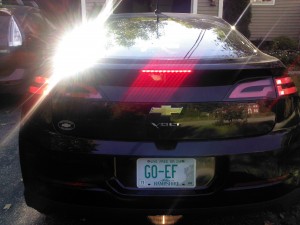American PIEV Market–still not there
Over the past couple of years the American PIEV market has grown exponentially, although it still represents less than 3% of the total market. The NISSAN Leaf, for example was the first full production EV, introduced in 2011, to hopefully be built at the rate of 100,000 vehicles a year, but with a maximum driving distance limit of 100 miles, sales were much lower. Furthermore, this vehicle started at a base price of over $32,000 ($24,500 with $7,500 government rebate); but the real cost of ownership over time was anticipated to be much higher as the battery itself is $15,000 and had an unknown capacity over time. We are all familiar with how Li-Ion batteries work (or don’t over time) from our laptop computers and portable tools. This limited knowledge has determined to be a major EV consumer concern; one that will vary depending on the way it is utilized by the owner. NISSAN determined that an 8 year warranty would be sufficient, and even had a major price decrease in 2013 to get more people into the Leaf. The bottom line is that only those that want to pay a major premium for the environment will take the economic plunge. Even NISSAN admits that battery technology will improve as volumes increase, leaving those with early adoption being further penalized as new batteries will only go into newer cars, reducing the resale value of the older ones.
The Chevy VOLT, released in 2012–at a higher price of $40,000 ($32,500 with government rebate) included a IC “range extender” motor to charge the battery, eliminating the problem with range–but still has all of the same battery issues and would also lose its resale value. A 2013 Volt for example, is now worth about $15,000 in 2015 according to KBB.com. It also is much more complex a vehicle.
TESLA motors has an even better capability, but at an original cost of over $100,000 was limited in it’s application, until the Model S came out, which is still too pricey for most people to change over from their gas powered vehicles. All major car companies, such as Ford and Toyota, are introducing Electric Vehicles in a hybrid, or limited EV versions, but are doing so with a non-removable battery pack. As traditional car companies they simply can not conceive of not including the power source in the vehicle, which will be to their detriment, as well as any owner who invests in one of their EV’s.
Only A Better Place had originally made a “swappable battery” vehicle , in partnership with Renault, which has a family of electric cars with battery changing technology designed in it that enables switching over to an electric car that will be economically feasible for the majority of the population, including business applications. However, it required an entirely new infrastructure in order to be applied that includes battery changing stations, that proved so expensive to implement that the company had to declare bankruptcy. Proven out originally in Israel, Denmark and Northern California; A Better Place leased the battery, making the initial cost of ownership of the vehicle much less, with the leasing cost of the battery power being economically comparable to, or even cheaper, than filling up with gas at a gas station. The convenience was even designed to be faster and safer than present gas filling stations, but at too high a cost. The only thing missing was the infrastructure and with so few cars there simply was not the volumes required to make it economically feasible. In America there are limited numbers of new cars being built such that less than 5% of cars on the road will be Electric over the next 5 years unless conversions are built up as well despite the increased capability of batteries.


